In the world of event planning and promotion, pre-event emails are a secret weapon for making an impact. Whether you’re organizing a corporate conference, a music festival, a charity fundraiser, or any other event, the way you communicate with your attendees before the big day can significantly influence their experience and overall satisfaction.
The Power of Sending Pre-Event Emails to Attendees
Pre-event emails are more than just a formality; they’re your direct line of communication with your attendees. They set the stage, build anticipation, and provide crucial information that ensures your event runs smoothly. However, creating effective pre-event emails requires careful planning and execution. In this comprehensive guide, we’ll explore the art and science of optimizing pre-event emails to engage your audience, boost attendance, and leave a lasting impression.
With the keyphrase “pre event email to attendees” in mind, let’s delve into the various aspects of crafting these essential messages. From understanding their significance to mastering the art of personalization and crafting compelling content, we’ll equip you with the knowledge and tools needed to send pre-event emails that truly make an impact.
In the sections that follow, we’ll break down the key elements of pre-event emails, discuss design and layout considerations, explore the art of writing engaging content, and delve into the nuances of timing, frequency, and measuring success. By the end of this guide, you’ll have the expertise to create pre-event emails that stand out and help you achieve your event’s goals.
So, let’s dive into the world of pre-event emails and discover how to optimize them for maximum impact. Whether you’re a seasoned event planner or new to the game, there’s something valuable here for everyone.
Understanding the Significance of Pre-Event Emails
Before we delve into the nitty-gritty of crafting pre-event emails, it’s essential to understand their significance in the world of event planning. Pre-event emails play a pivotal role in setting the tone and building anticipation among your attendees.
What Are Pre-Event Emails?
Pre-event emails are personalized messages sent to registered or potential attendees before an event. They serve as a means of communication, providing essential information, reminders, and an opportunity to engage with your audience before the event takes place. These emails can vary in format, from simple text messages to visually appealing HTML templates, depending on your event’s style and audience.
The primary purpose of pre-event emails is to ensure that attendees are well-prepared and excited about your event. They are your chance to convey crucial details, answer common questions, and create a sense of connection.
Why Are Pre-Event Emails Important?
The importance of pre-event emails cannot be overstated. Here are a few key reasons why they are a vital component of any successful event planning strategy:
- Information Dissemination: Pre-event emails deliver crucial information about the event, including the date, time, location, agenda, and any special instructions. This helps attendees plan their visit effectively.
- Anticipation Building: By providing teasers, event highlights, and sneak peeks, pre-event emails help build excitement among attendees. A well-crafted email can create a buzz and generate anticipation.
- Attendee Engagement: These emails serve as a platform for engaging with your audience. You can use them to conduct surveys, offer exclusive content, or encourage attendees to connect with speakers and fellow participants.
- Reduction of Confusion: Clear and concise pre-event emails can reduce confusion and uncertainty, ensuring that attendees have a seamless experience from registration to the event’s conclusion.
In essence, pre-event emails are your opportunity to leave a positive and lasting impression on your attendees before the event even begins. They set the stage for a successful and well-organized gathering.
Crafting Compelling Pre-Event Emails
Crafting compelling pre-event emails is an art that requires attention to detail, creativity, and strategic thinking. In this section, we’ll explore the fundamental elements that make pre-event emails engaging and effective.
Setting the Stage: Establishing the Event Context
Before you dive into the specifics of your event in a pre-event email, it’s essential to set the stage. Think of this as the opening act of your email campaign, where you establish the context and pique your attendees’ interest.
The Opening Act: Start your email with a compelling and personalized greeting. Address your attendees by name to create a sense of individual connection. Then, provide a brief overview of the event and its significance. This introduction should capture their attention and generate excitement.
Event Highlights: Highlight key aspects of the event that make it unique or noteworthy. Whether it’s a guest speaker, an exciting agenda, or exclusive perks, these highlights should serve as hooks that keep your attendees reading.
Personalization Techniques
Personalization is the secret sauce of effective pre-event emails. When attendees feel like you understand their needs and preferences, they are more likely to engage and attend your event.
Attendee Segmentation: Segment your email list based on attendee demographics, interests, or past interactions. This allows you to tailor content to specific groups, increasing relevance.
Personalized Content: Customize the email content to resonate with each segment. Mention past interactions, recommend sessions based on interests, or offer exclusive discounts to previous attendees.
Dynamic Content: Consider using dynamic content blocks that change based on the recipient’s information. For example, display different sessions for different segments.
Call to Action (CTA)
A pre-event email without a clear call to action is like a ship without a rudder. Your CTA guides attendees on the next steps they should take.
Clarity and Urgency: Make your CTA clear and urgent. Whether it’s “Register Now,” “Reserve Your Seat,” or “Get Your Exclusive Discount,” attendees should know exactly what action to take and why they should do it now.
Button Design: Use eye-catching buttons that stand out in your email design. Ensure they are clickable and direct attendees to the desired destination, such as the event registration page.
Key Elements of Pre-Event Emails
To create impactful pre-event emails, you need to pay attention to several key elements. In this section, we’ll break down these elements to ensure your emails provide attendees with the information they need.
Event Details
The foundation of a pre-event email is the presentation of essential event details. Without this information, attendees may be uncertain about the event’s logistics.
Date and Time: Clearly state the event’s date and time, including the start and end times. Use a user-friendly date format and consider including time zone information for virtual events.
Location: Provide the event’s physical or virtual location, including the venue name, address, or a link to the online platform.
Event Type: Mention the type of event and its purpose, whether it’s a conference, seminar, concert, or workshop.
Agenda and Schedule
A well-structured agenda and schedule are critical for keeping attendees informed and engaged.
Event Agenda: Present a concise event agenda that outlines the event’s flow, including sessions, breaks, and activities.
Speaker and Presenter Information: Include details about the speakers and presenters, such as their names, credentials, and the topics they will cover. This adds credibility to your event.
Venue and Logistics
For physical events, venue and logistics information is vital for attendees to plan their visit.
Venue Details: Provide information about the venue, including its name, address, parking availability, and any special considerations (e.g., accessibility features).
Transportation: If relevant, offer tips on how attendees can reach the venue, including public transportation options, parking information, or shuttle services.
Accommodation: If your event spans multiple days, consider recommending nearby hotels and accommodations for out-of-town attendees.
Speakers and Presenters
In pre-event emails, it’s essential to introduce the speakers and presenters, as they play a significant role in drawing attendees.
Speaker Profiles: Share brief but compelling profiles of your event’s speakers. Highlight their expertise, achievements, and why attendees should be excited to hear from them.
Session Highlights: Tease the content each speaker will cover or any special sessions they will lead.
Registration and Ticketing Information
If attendees haven’t registered yet, this section should guide them through the process.
Registration Instructions: Provide step-by-step instructions on how to register for the event. Include a clear link to the registration page.
Ticketing Information: If your event involves ticketing options (e.g., different ticket tiers), explain the choices and their benefits.
By addressing these key elements in your pre-event emails, you ensure that attendees have a comprehensive understanding of the event and can make informed decisions.
Design and Layout
The design and layout of your pre-event emails significantly impact their effectiveness. In this section, we’ll explore the visual aspects of your emails that capture attention and leave a lasting impression.
Visual Appeal
Visual appeal is crucial in email design. A well-designed email is more likely to engage your audience and stand out in their inbox.
Branding: Ensure that your email design is consistent with your event’s branding. Use your logo, color scheme, and fonts to create a cohesive look.
Eye-Catching Images: Include high-quality images that relate to the event. Images of speakers, venues, or previous events can add a visual dimension to your email.
Whitespace: Don’t overcrowd your email with text and images. Use whitespace effectively to make the content more readable and visually pleasing.
Mobile Responsiveness
In today’s mobile-centric world, your pre-event emails must look great and function well on various devices.
Responsive Design: Use responsive email templates that adapt to different screen sizes. Test your emails on mobile devices to ensure they display correctly.
Mobile-Friendly Buttons: Make sure that any buttons or CTAs are easily tappable on mobile screens. Use a large enough font size for text.
Concise Content: Keep your email content concise and scannable for mobile users who may be on the go.
By paying attention to the design and mobile responsiveness of your pre-event emails, you can create visually appealing messages that engage your audience effectively.
Writing Engaging Content
The content of your pre-event emails is where you have the opportunity to truly engage and excite your attendees. In this section, we’ll explore the art of crafting content that keeps your audience hooked.
Compelling Subject Lines
The subject line is the first thing your recipients see, and it can make or break whether they open your email.
Be Clear and Concise: Create subject lines that are clear, concise, and directly related to your event. Avoid jargon or vague phrases.
Use Action Words: Action-oriented words like “Join,” “Discover,” or “Experience” can instill a sense of involvement and excitement.
Intrigue and Curiosity: Pique curiosity by using subject lines that hint at what attendees can expect without revealing everything. This can encourage them to open the email to learn more.
Body Content
The body of your pre-event email is where you provide information, tell a story, and guide attendees.
Engaging Headings: Use engaging H3 and H4 subheadings to break up the content and make it easy to scan. For example, use headings like “Event Highlights” or “Speaker Spotlights” to introduce various sections.
Keep It Readable: Aim for a Flesch-Kincaid readability score of at least 50, making your content clear and accessible to a broad audience.
Brevity and Clarity: Keep your content concise and to the point. Use short paragraphs and bullet points to make it easier to digest.
Storytelling in Emails
Storytelling can be a powerful tool to create an emotional connection with your attendees.
Narrative Arc: Craft your email content with a narrative arc. Begin with an introduction, build tension by highlighting the event’s benefits, and conclude with a call to action.
Use Testimonials: Share success stories and testimonials from past attendees or speakers. These authentic stories can create trust and excitement.
Visual Storytelling: Incorporate visuals, such as images and videos, to tell a story visually. A short video message from a speaker or organizer can be particularly engaging.
By mastering the art of writing engaging content for your pre-event emails, you can capture your attendees’ attention and build anticipation effectively.
Timing and Frequency
Timing and frequency play a crucial role in ensuring your pre-event emails have the desired impact. In this section, we’ll explore when and how often to send these important messages.
When to Send Pre-Event Emails
Determining the right timing for sending pre-event emails is essential for capturing your attendees’ attention and keeping them engaged.
Early Teasers: Start the email campaign well in advance. Send teaser emails early, giving attendees time to plan and anticipate the event. This could be several months before for larger events.
Countdown Reminders: As the event date approaches, send regular reminders with a countdown to build excitement. These reminders can be weekly or bi-weekly.
Last-Minute Details: Closer to the event, send emails with last-minute details, including parking information, security guidelines, and any weather-related updates.
Frequency and Follow-Ups
The frequency of your pre-event emails should strike a balance between keeping attendees informed and avoiding email fatigue.
Segmented Campaigns: Consider segmenting your email list based on attendee interests or registration status. This allows you to send relevant content and avoid bombarding recipients with irrelevant messages.
Engagement-Based Follow-Ups: Monitor recipient engagement and tailor follow-up emails accordingly. For example, send a special offer to those who haven’t registered yet.
Personalized Reminders: If attendees have started the registration process but haven’t completed it, send personalized reminders. These can include enticing offers or benefits.
Timing and frequency are key factors in the success of your pre-event email campaign. By following the strategies outlined in this section, you can ensure that your emails reach your attendees at the right moments and keep them engaged and excited about the upcoming event.
Measuring Success
To ensure the effectiveness of your pre-event email campaigns, it’s essential to measure their success using key metrics. In this section, we’ll explore the metrics to track and how to gauge the impact of your efforts.
Key Metrics to Track
Monitoring the right metrics allows you to assess the performance of your pre-event emails and make informed decisions.
Open Rate: The open rate tells you the percentage of recipients who opened your email. A high open rate indicates strong subject lines and overall interest.
Click-Through Rate (CTR): CTR measures the percentage of people who clicked on a link within your email. It’s a critical metric for assessing the effectiveness of your calls to action.
Conversion Rate: The conversion rate tracks the percentage of email recipients who completed the desired action, such as registering for the event. This is a direct measure of the email’s impact on event attendance.
Unsubscribe and Complaint Rates: These metrics help you gauge the level of recipient dissatisfaction. High unsubscribe or complaint rates may indicate issues with email content or frequency.
A/B Testing
A/B testing is a valuable practice for refining your pre-event email campaigns and improving their performance.
Subject Line Testing: Experiment with different subject lines to see which ones yield higher open rates. Test for clarity, urgency, and curiosity.
Content Variations: A/B test different versions of email content. For example, try variations in the layout, visual elements, or wording to determine what resonates most with your audience.
Call to Action Testing: Test the effectiveness of your CTAs by using different wording, colors, or button designs. See which CTAs generate the most clicks and conversions.
By tracking key metrics and conducting A/B tests, you can continuously improve your pre-event email campaigns and adapt your strategies for better results.
Best Practices for Pre-Event Email Campaigns
Successful pre-event email campaigns are built on a foundation of best practices. In this section, we’ll explore the dos and don’ts to ensure your emails are effective and well-received.
A. Dos and Don’ts
Dos:
- Segment Your Audience: Do segment your email list to send relevant content to specific groups of attendees based on their interests and engagement history.
- Use Personalization: Do personalize your emails by addressing attendees by their names and tailoring content to their preferences.
- Test Across Devices: Do ensure that your pre-event emails are responsive and look great on various devices, especially mobile phones and tablets.
- Engage with Visuals: Do include images, videos, and other visual elements that enhance your email’s appeal and convey information effectively.
- Incorporate Social Sharing: Do encourage recipients to share your event details on social media to extend your reach and create buzz.
Don’ts:
- Overload with Information: Don’t overwhelm recipients with excessive details. Keep your emails concise and to the point.
- Ignore Mobile Users: Don’t forget to optimize your emails for mobile users. Failing to do so can result in a poor user experience.
- Lack a Clear CTA: Don’t leave your recipients wondering what action to take. Always include a clear and compelling call to action.
- Send Irrelevant Content: Don’t send generic content that doesn’t cater to the specific interests and needs of your audience segments.
- Neglect Testing: Don’t skip testing your emails before sending them. Check for any design issues, broken links, or errors that could affect the user experience.
B. Real-Life Examples
To inspire your pre-event email campaigns, let’s look at a few real-life examples of well-executed pre-event emails:
Example 1: Event Teaser Email
This email creates anticipation by offering a sneak peek of what attendees can expect at the event. It uses compelling visuals and a clear CTA to drive registrations.
Subject: Get Ready to Be Amazed! 🌟 Exclusive Sneak Peek Inside [Event Name]
Dear [Recipient’s Name],
The wait is almost over! We’re thrilled to give you an exclusive sneak peek inside [Event Name], the event of the year. Get ready to be amazed, inspired, and engaged like never before.
📅 Event Date: [Date]
🕒 Event Time: [Time]
📍 Event Venue: [Venue]Here’s what you can expect:
- Inspiring Keynote Speakers
- Interactive Workshops
- Networking Opportunities
- Exclusive Sessions
Don’t miss out on this incredible experience! Secure your spot now by clicking the button below.
[Register Now]
Join us as we embark on a journey of knowledge, inspiration, and connection. We can’t wait to see you at [Event Name]!
Best regards,
[Your Name]
[Your Organization]
Example 2: Personalized Invitation
This email showcases the power of personalization, addressing the recipient by name and offering a tailored event recommendation based on their preferences.
Subject: An Exclusive Invitation Just for You, [Recipient’s Name]!
Hello [Recipient’s Name],
We are excited to extend an exclusive invitation to you for [Event Name]. This invitation is tailored just for you, as we believe you’ll find this event exceptionally valuable.
📅 Event Date: [Date]
🕒 Event Time: [Time]
📍 Event Venue: [Venue]Based on your interests and past participation, we recommend the following sessions and activities:
- [Session 1 Title]
- [Session 2 Title]
- [Interactive Workshop]
- [Networking Mixer]
Your personalized registration link awaits you. Simply click below to secure your spot at [Event Name].
[Register Now]
We look forward to hosting you at [Event Name] and providing an enriching experience that aligns with your preferences.
Warm regards,
[Your Name]
[Your Organization]
Example 3: Countdown Reminder
Countdown reminder emails build excitement by emphasizing the limited time remaining until the event. They include a clear CTA to encourage registration.
Subject: Only [X] Days Left! Don’t Miss [Event Name]
Hello [Recipient’s Name],
Time is running out, and we don’t want you to miss out on the incredible [Event Name]. Only [X] days remain until the event kicks off, and we’re excited to have you join us.
📅 Event Date: [Date]
🕒 Event Time: [Time]
📍 Event Venue: [Venue]Here’s a quick reminder of what’s in store for you:
- Inspiring Keynote Speakers
- Engaging Workshops
- Networking Opportunities
- Exclusive Sessions
Don’t wait until it’s too late! Secure your spot by clicking the button below.
[Register Now]
Our team is putting the final touches on everything to ensure an unforgettable event. We can’t wait to welcome you!
Warm regards,
[Your Name]
[Your Organization]
By following these best practices and drawing inspiration from real-life examples, you can create pre-event email campaigns that resonate with your audience and drive event success.
Tools and Resources
To simplify the process of creating effective pre-event emails, there are various tools and resources at your disposal. In this section, we’ll explore some of the most valuable ones that can streamline your email marketing efforts.
Email Marketing Platforms
- MailChimp: MailChimp offers a user-friendly interface, customizable templates, and analytics to help you manage your pre-event email campaigns effectively.
- Constant Contact: Constant Contact provides a range of email marketing features, including list segmentation, automation, and easy integration with event registration platforms.
- HubSpot: HubSpot’s robust marketing automation tools allow you to create targeted pre-event email campaigns, track engagement, and measure success.
Templates and Resources
- Canva: Canva offers a range of email design templates that you can customize to create visually appealing pre-event emails.
- Rawpixel: Rawpixel is a great resource for high-quality, royalty-free images to use in your email designs and promotional materials.
- Litmus Email Testing: Litmus allows you to test how your emails will appear on different devices and email clients to ensure a consistent user experience.
- Neil Patel’s Email Marketing Guide: Neil Patel’s guide covers the fundamentals of email marketing, including strategies and tips for successful campaigns.
By leveraging these tools and resources, you can streamline your pre-event email campaigns, design visually appealing emails, and access valuable information and guidance to make your event promotion efforts more effective.
Conclusion: Pre-Event Emails Make the Difference
In the world of event promotion, pre-event emails are an indispensable tool that can make the difference between an average turnout and a resounding success. As we conclude this guide, let’s recap the key takeaways and emphasize the importance of pre-event emails in your event planning strategy.
Key Takeaways
- Pre-event emails are a powerful means of communication that set the stage, build anticipation, and provide essential information to attendees.
- Crafting compelling pre-event emails involves setting the event context, using personalization techniques, and creating clear calls to action.
- Visual appeal, mobile responsiveness, and the art of storytelling play crucial roles in email design and content creation.
- Timing, frequency, and segmenting your email list are vital for successful pre-event email campaigns.
- Measuring success through key metrics and conducting A/B testing are essential for continuous improvement.
- Best practices, such as personalization, responsive design, and concise content, can help you create effective pre-event emails.
- Real-life examples provide inspiration for crafting engaging and impactful pre-event emails.
- Utilizing tools and resources, including email marketing platforms, templates, and design resources, can streamline your email marketing efforts.
The Power of Pre-Event Emails
In today’s digital age, where event-goers receive a multitude of invitations and information, pre-event emails serve as your secret weapon. They allow you to connect with your audience on a personal level, create excitement, and ensure attendees have all the information they need for a seamless event experience.
Whether you’re organizing a corporate conference, a music festival, a charity fundraiser, or any other event, pre-event emails are your direct line of communication. They are the key to making an impact, driving attendance, and leaving a lasting impression on your participants.
So, embrace the art and science of pre-event email marketing, and remember that the difference between an ordinary event and an extraordinary one often lies in the emails you send. With the strategies, best practices, and tools outlined in this guide, you have the knowledge and resources to create pre-event emails that stand out and help you achieve your event’s goals.
Thank you for joining us on this journey through the world of pre-event emails. We wish you the utmost success in your event promotion endeavors.











